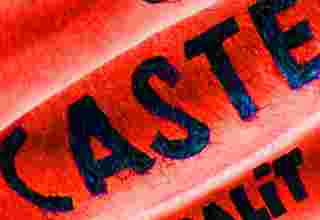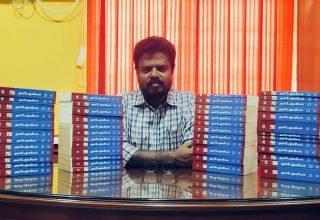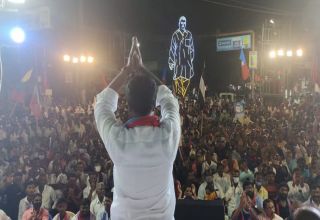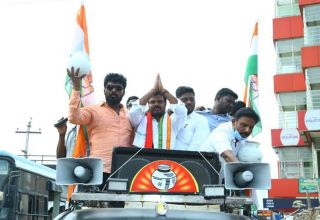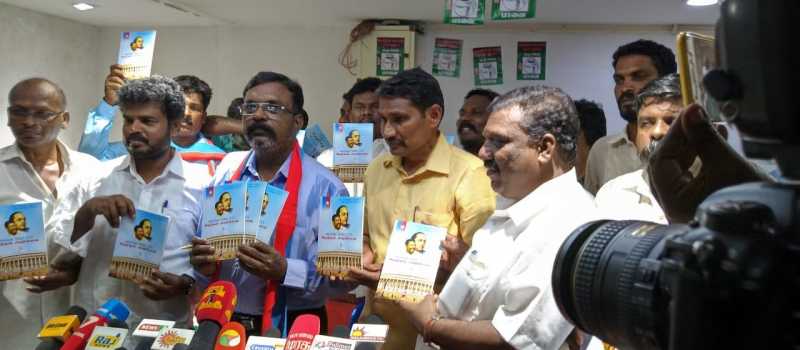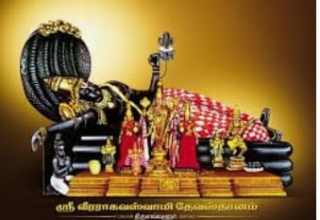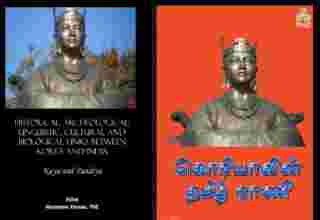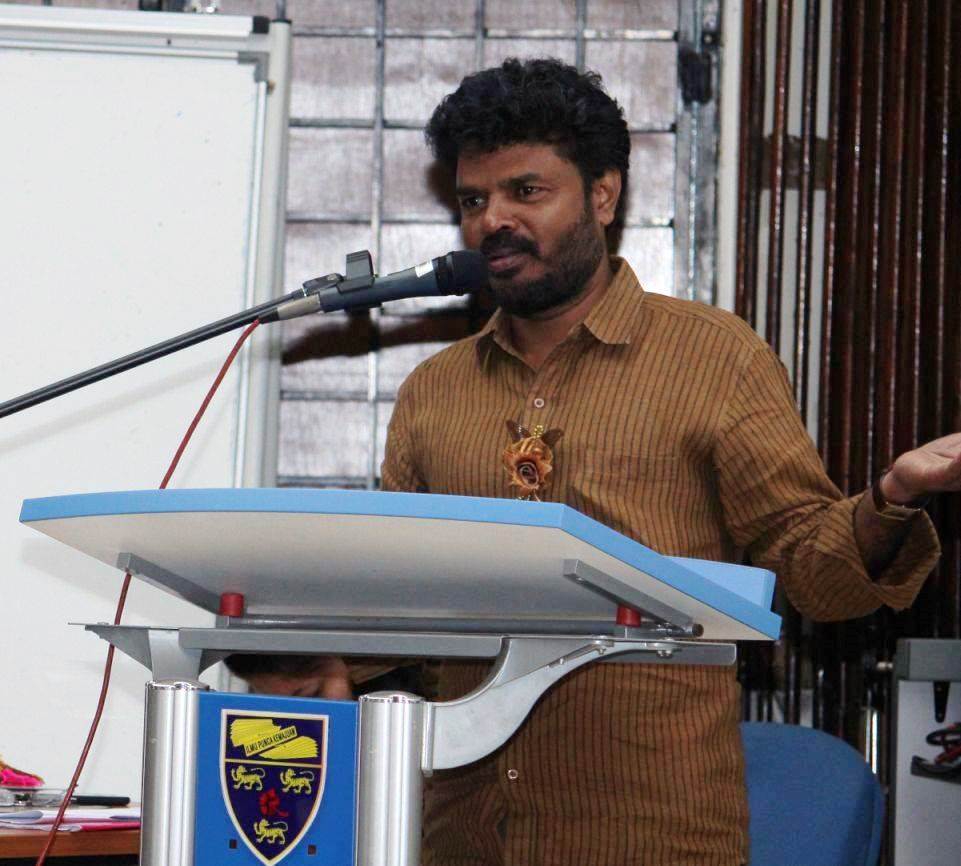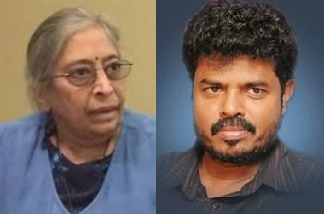Hugo Gorringe
May 8, 2013 The Hindu
The educational and economic development of Dalits is seen by the backward castes as a challenge to the social order, as recent incidents in Tamil Nadu show
On the evening of November 7, 2012, a crowd numbering over 1000 people burst into three Dalit settlements in Dharmapuri, north-western Tamil Nadu, and laid them waste. Over a period of several hours, they looted, smashed and burned. Trees had been felled on all approach routes to prevent police and fire-tenders from reaching the scene and those officers who were present decided that discretion was the better part of valour. Over 260 houses were razed to the ground, valuables worth millions of rupees stolen, and goods from televisions to motorbikes smashed and set on fire.
Status competition
The immediate motive for this sustained attack was said to be an inter-caste marriage between a Dalit man and a backward caste woman. Tamil Nadu, however, has a long history of anti-caste activism which encouraged cross-caste marriages. Even today, couples marrying across caste are entitled to various state benefits. This region, furthermore, has a history of communist inspired mobilisation that saw the poor of all castes uniting against landlords and industrialists. In the past 20 years, however, caste identities have been increasingly politicised and polarised by politicians seeking to make political capital out of community identities. It is caste politics and status competition that underpin such violence rather than domestic politics; a point emphasised in May 2013 when violence erupted once more around a Vanniyar (Most Backward Caste) caste conference.
Those at the forefront of the current upsurge in violence are those called the ‘backward’ or the ‘most backward’ castes. These are formal categorisations that entitle groups to affirmative action in recognition of the fact that they have historically lacked the privileges of education and social status. These castes are located just above Dalits in the caste hierarchy but tend to own land. These castes have increasingly mobilised politically to demand special provisions for their group.
In so doing they have reinforced the boundaries of caste and mobilised against perceived threats and injustices. One recurrent assertion of such groups is that Dalits receive favourable treatment from the state and misuse anti-caste legislation to get back at higher castes. Attempts by Dalits to assert themselves in the late 1990s, thus, were met by violent repression from backward castes anxious to defend their status and dominance.
The tragedy of the situation is that there have been systematic efforts to reduce caste tensions in this millennium. Thol. Thirumavalavan, Member of Parliament, Viduthalai Chiruthaigal Katchi (VCK-Liberation Panther Party) – the largest Dalit party in Tamil Nadu – came to prominence for his fiery rhetoric that promised to hit back against caste aggression and spoke of a counter-violence of the oppressed. Since gaining office, however, he joined hands with Dr. S. Ramadoss – leader of the Most Backward Caste Vanniyar party, Pattali Makkal Katchi – and campaigned on Tamil issues in the interests of social harmony. Indeed, as Gowthama Sannah – Dalit intellectual and VCK leader – put it in 2012:
“Back then when we spoke of hitting back, Mukkulathors and Vanniyars were vehemently and violently anti-Dalit. After Dalits started to counter-attack, their predatory instincts diminished. Now they do not engage in major riots, they do not tend to set light to cheris [Dalit settlements], they do not tend to muster people to attack Dalits. Though small-scale violence persists in many places, the will to engage in major clashes has declined. Then why should we stick to the same ‘hit back’ slogan and strategy? You can only say that when there is a need. Now, when they are being quiet – after the war, peace is the only way.”
Barely a month after this statement, caste ‘wars’ erupted again. Following on from the arson in Dharmapuri there have been similar incidents elsewhere. One question that has been raised is whether this violence can be understood as a form of untouchability or whether it reflects the more recent politicisation of identity. Certainly Dalits have been hitting back across India, but to equate this to the eradication of hierarchy would be premature. Dalits – or Scheduled Castes as they are known in official documents – are still disproportionately represented amongst the poor and landless and still struggle to realise the promises of the Constitution.
While activists are fond of insisting that nothing changes, caste is clearly changing across India and Dalits are developing economically and educationally just as others are. Indeed, it is arguably because of this development that the current conflicts arise. Quietly and gradually, Dalits are escaping forms of dependence and, in so doing, are posing a challenge to the caste order that those just above them in the caste hierarchy find hard to stomach. In Dharmapuri in 2012 and Marakkanam in 2013, mobs deliberately targeted the economic assets of their victims. One factor fuelling their animosity is that Dalits no longer act as submissive agricultural labourers in the fields of the dominant castes. This resentment feeds into a sense of insecurity that is captured in backward caste slogans that say: “first our jobs and now our women.” Women’s bodies, here, serve as the embodied markers of caste purity and so it is when Dalit men marry Vanniyar women that issues arise. The voices and choices of the women concerned are lost in the claims and counter-claims of male politicians.
For all Sannah’s talk of peace, the violence in Dharmapuri was not completely unexpected. Earlier in the year, a Vanniyar Member of the Legislative Assembly had threatened violence against any non-Vanniyar who dared to marry a Vanniyar girl. Though this hate speech was made on an open stage, no action was taken against him for inciting violence. Such speeches are extremely popular within the party because they counter-pose valorous sons-of-the-soil against uppity Dalits who ought to know their place. This construction of an exclusive identity helps create internal solidarity that may help the party in elections, but commentators are increasingly questioning the social costs of such a strategy. Finally, in May 2013, senior members of the PMK were arrested and charged with inciting violence; a move which prompted widespread disruption across the State and party members smashed and burned vehicles, blocked roads and took to the streets.
Vociferous forms
It is tempting to dismiss this violence as indicating the continuing significance of age-old caste identities and relations. To do so, however, ignores the fact that the caste system is clearly changing and the structures underpinning it are starting to shift. Old certainties are being eroded and caste identities are assuming new – often more vociferous – forms. Aspects of caste and untouchability, however, continue to be embedded in the make-up of Indian society. Much as institutions in the U.K. had to confront issues of institutionalised racism, those in India need to recognise and address institutionalised casteism throughout society.
The road towards a casteless and egalitarian society will be long and tortuous, and the divisions between Dalits and ‘caste Hindus’ will prove hardest of all to bridge. Standing by while politicians spew casteist venom renders the authorities partly culpable for caste polarisation and any ensuing violence. If the belated arrest of politicians responsible for ‘hate-speech’ signals a new and more proactive approach to caste politics, then perhaps some good may arise from the ashes of Dalit homes in Dharmapuri.
(Hugo Gorringe is Senior Lecturer in Sociology, University of Edinburgh. Email: Hgorring@staffmail.ed.ac.uk)
http://scientifictemper.hpage.co.in/social-boycott-of-dalits_91004155.html

